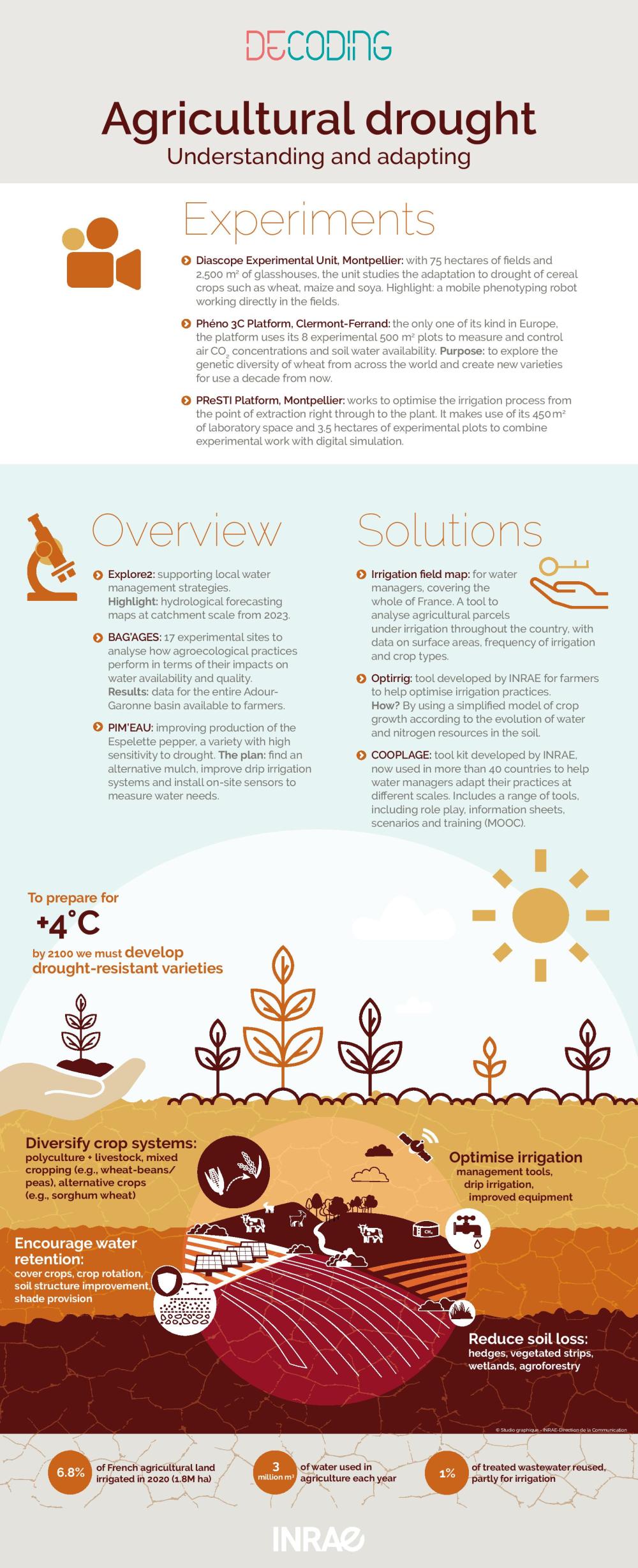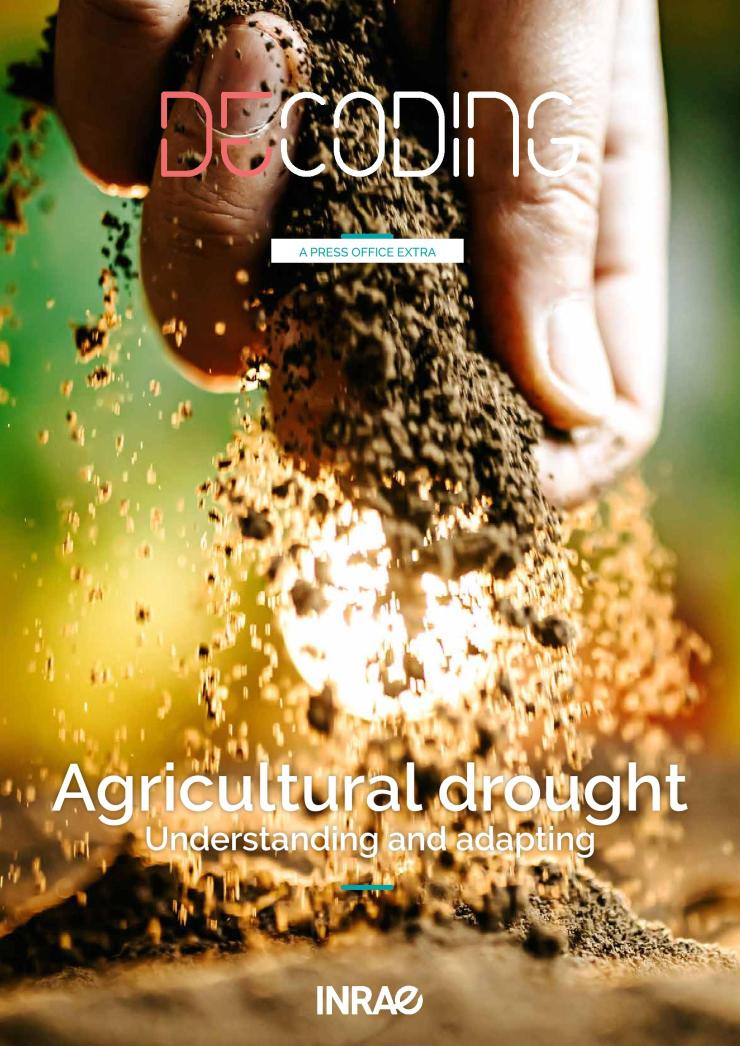Press report
Climate change and risksDecoding - Agricultural drought: understanding and adapting
Published on 22 April 2024
In short
Droughts are not confined to the summer months. We need only remind ourselves of the winter of 2022-2023 in France, when no rain fell for more than 30 consecutive days. Droughts are extended periods of unusual water deficit occurring in at least one of the compartments of the water cycle (soil, aquifers, rivers and lakes, etc.). They can be characterised in several ways:
• Meteorological drought: when there is a lack of precipitation (rain or snow);
• Agricultural drought: when soil moisture cannot support plants;
• Hydrological drought: when river flows and groundwater levels are unusually low.
Agriculture is one of the sectors to be directly hit by the increased frequency of droughts. Changes must be made to adapt to such events, which may well become more extreme in both intensity and duration under climate change. As one of society’s most pressing concerns, this challenge to the food supply has excited keen interest in the solutions research can provide.
In exploring the future shape of farming, INRAE’s scientists, based both in mainland France and its overseas territories, have worked to establish close links with actors and stakeholders, combining laboratory-based research with experiments and investigations in the field. There are many avenues to pursue, from the development of drought-resistant varieties to devising and implementing agroecological practices, along with the important task of optimising irrigation.
All have a common goal – to develop well-designed tools and practical actions for use by farmers and all those involved in the transition that must be made. In doing so, they have created a direct route from laboratory to field.
This addition to the Decoding series provides an insight into the support given by INRAE to farmers in adapting to drought, with a focus on cereal crops.
Deciphering agricultural drought with our infographic

Glossary
- Agroecology: set of agricultural practices designed to promote sustainable food systems respectful of both people and their environments. Such systems deploy farming production methods and sectors that make best use of the ecological, economic and social capacities of an area or region.
- Agroforestry: combined production systems that integrate trees into farming practices and spaces, or agricultural production into forested and wooded areas.
- Vegetated strips: linear agroecological infrastructure populated by herbaceous plants. Their function depends on their position in a field and on the plant species they contain. Some are designed to protect biodiversity, while others can protect watercourses from pollutants, for example.
- Phenotyping: the qualitative description of observable characteristics in living organisms. Phenotyping can be anatomical, morphological or molecular.
- Mixed crop and livestock farming: agricultural production systems combining one or several crops (polycultures) with at least one type of livestock. The crops can be sold and/or serve as feed for the animals.
- Selective breeding: or improvement of plants. Creation of new varieties with improved value, whether in terms of agronomy (yield, taste, disease resistance etc), technology (processing for human food/animal feed, support for particular sectors, etc.) or the environment (more efficient use of nitrogen, less need for pesticides, etc.), via the introgression of traits of interest. Selective breeding is an age-old practice, but over the years it has benefited from the results of research and advances in biotechnology.
- Wetlands: areas that are habitually underwater or saturated by water, either permanently or intermittently, providing important ecosystem services. Where present, vegetation is dominated by hygrophilous plants for at least part of the year.

